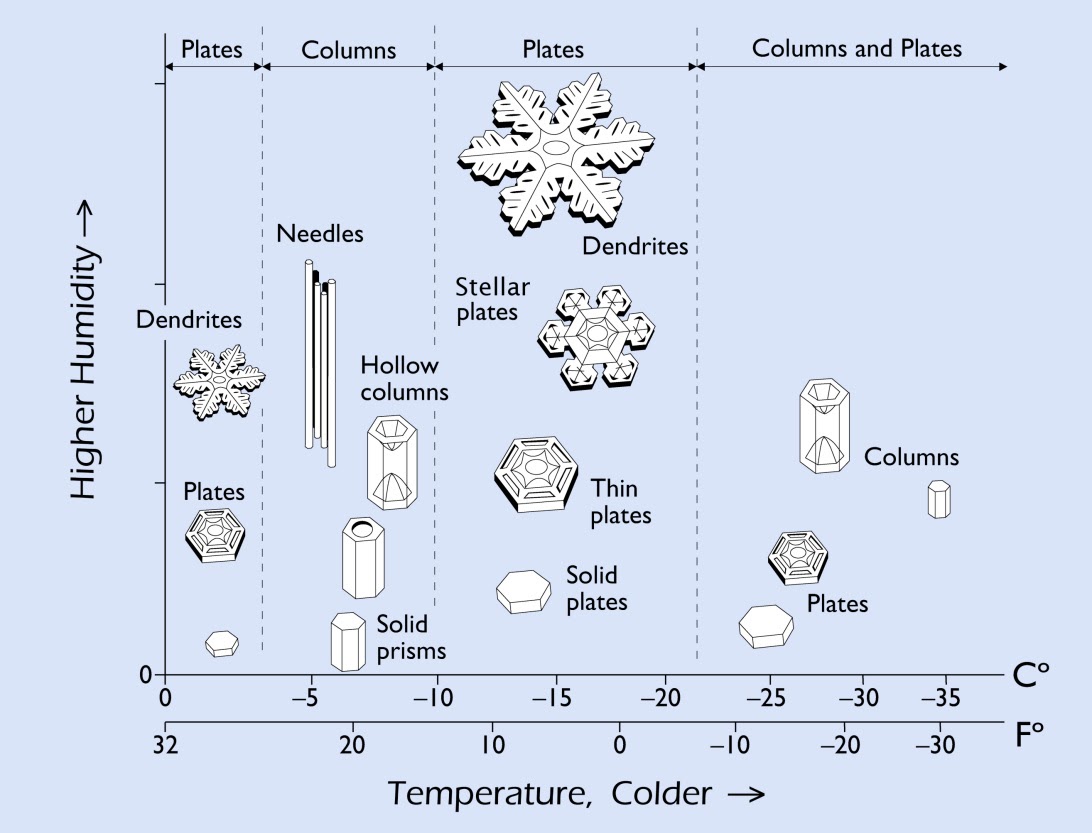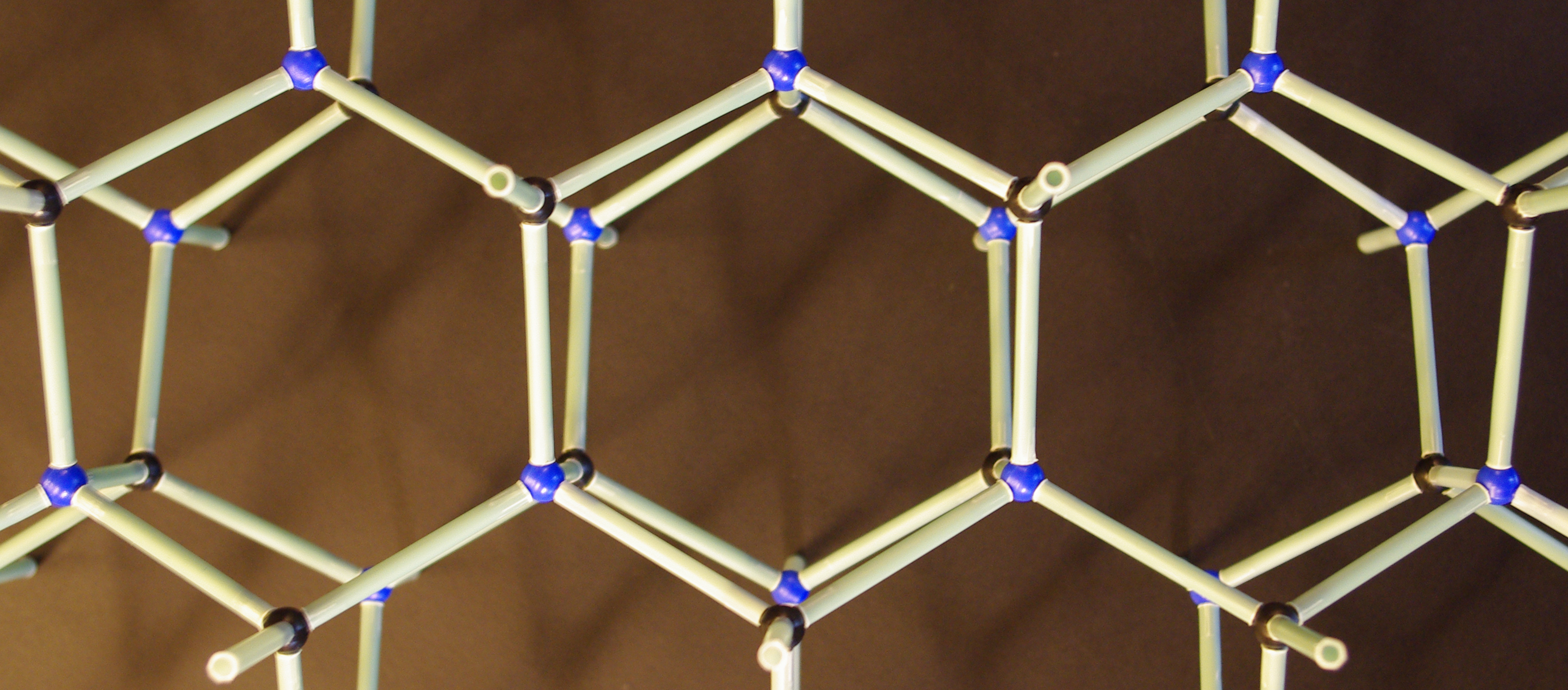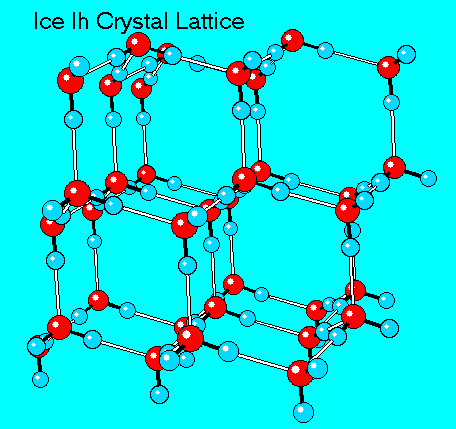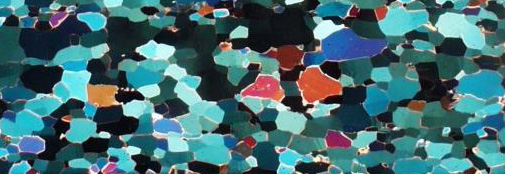The Most Common Ice Crystal Shape Is
Particles in the atmosphere on which ice crystals may grow. Advection frost is a collection of small ice.

Snow Stellar Crystals Snowflakes Real Snowflakes Snow Crystal
The most common ice crystal shape is - virga.

. Hoarfrost also forms in refrigerators and freezers. They resemble lacy hexagons. The ice crystals are contained in the tiny cirrus clouds hanging 20000 feet high or more.
Halos and other optical phenomena are created because of the interplay between the shape of the ice crystals and the angle between their facets. Although both the moon and sun halos are the most common types of halo the exact shape of the ice crystal responsible for their formation is still not clear. Clouds forming over a warm ocean current.
A common theme when classifying snow crystals columns got their name due to looking like a column. When you look at the crystal on end the cross-section is a six-sided prism or hexagon. Clouds forming on the windward slope of a mountain.
The main factor affecting snowflake shape is temperature. This is also known as a Tumbled Stone. Clouds formed by surface heating.
This crystal can be used for a wide array of healing practices and is a good shape for beginners. Most snowflakes are flat crystals that have six sides. The most common ice crystal shape.
While the molecular structure of ice crystals is always hexagonal their shape can vary from a flat plate to a column. The most common snowflake shape. The most common phase transition to ice I h occurs when liquid water is cooled below 0 C 27315 K 32 F at standard atmospheric.
Virtually all ice on Earths surface and in its atmosphere is of a hexagonal crystalline structure denoted as ice I h spoken as ice one h with minute traces of cubic ice denoted as ice I c and more recently found Ice VII inclusions in diamonds. Water-based ice in the form of snow sea ice and glaciers are common crystallinepolycrystalline structures on Earth and other planets. In mineralogy crystal habit is the characteristic external shape of an individual crystal or crystal group.
Plate-like snowflakes form when the temperature is near -2 C 28 F or near -15 C 5 F as dictated by the snow crystal morphology diagram. Cold clouds composed entirely of ice crystals. These common snowflakes are thin plate-like crystals with six broad arms that form a star-like shape.
Warm clouds composed entirely of water droplets. Hexagonal shapes are often put forward as the most likely shape. Radiation frost is frost in the form of tiny ice crystals that usually shows up on the ground or exposed objects outside.
Clouds forming on the windward slope of a mountain. These form when snowflakes or ice-crystals fall from high cirriform clouds. A single snowflake is a single crystal or a collection of crystals while an ice cube is a polycrystal.
Small chunks of stone are tumble polished to give them a smooth and shiny surface. They are the main flakes seen in many snowfalls. The most common ice crystal shape is.
Another name for the ice-crystal process of rain formation. Temperature determines the shape of a crystal as it forms and also changes that shape as it melts. Most often clear quartz is found in this shape.
This angle is always 60 or 90 degrees. Cold clouds composed of ice crystals and supercooled droplets. The most common are radiation frost also called hoarfrost advection frost window frost and rime.
Like tetragonal crystals except not square in cross-section when viewing the crystal on end these crystals form rhombic prisms or dipyramids two pyramids stuck together. Recognizing the habit may help in identifying a mineralWhen the faces are well-developed due to uncrowded growth a crystal is called. The Pointed Crystal - This is one of the most common shapes of crystals and it features one pointed end and one rugged end.
This is due to diffuse reflection of the whole spectrum of light by the small crystal facets of the snowflakes. The columns are hexagonal like a wooden pencil. Clouds forming behind a jet airplane.
Fall streaks usually ____ before reaching the ground. Snowflakes have characteristic shapes because they consist of water molecules which have a bent shape. These crystals are known as diamond dust.
This is the most common cut and polished shape of crystal available. The main constituent shapes for ice crystals from which combinations may occur are needle column plate and rime. A single crystals habit is a description of its general shape and its crystallographic forms plus how well developed each form is.
Their faces are often decorated with amazingly elaborate and symmetrical markings. Snow appears white in color despite being made of clear ice. The form is irregular and sizes vary but generally they are smaller stones.
A cloud is said to be this when only ice crystals exist in it.

Crystal Systems Geology Minerals And Gemstones Crystals

Ice Crystal Structure University Of Copenhagen

Makalu Quartz A Stunning Quartz Cluster From Nepal This Eloquent Assemblage Of Quartz Shows The Best F Gems And Minerals Crystals And Gemstones Large Crystals

Ice Crystal An Overview Sciencedirect Topics

The Nakaya Snow Crystal Morphology Diagram Showing Different Types Of Download Scientific Diagram
Guide To Snowflakes Snowcrystals Com

The Nakaya Snow Crystal Morphology Diagram Showing Different Types Of Download Scientific Diagram

Water Ice Crystal Structure Ice Dance Protons Crystals

Christmas Photo Real Snowflakes Snowflakes Real Snowflake Images Snowflakes

Ice Crystal An Overview Sciencedirect Topics

By Alexey Klyatov Snow Crystal Snowflake Photos Snowflakes

Stellar Dendrites These Are The Most Recognizable Snow Crystals As You Can See From The Examples On The Right Their Name Comes From Thei Neve Animais Lindos

Snowflake A Day 23 Snowflakes Snow Crystal Crystals

Snowflake A Day 4 Snowflakes Snow Crystal Snow




Comments
Post a Comment